Sensitivity Analysis of Heavy Fuel Oil Spray and Combustion under Low-Speed Marine Engine-Like Conditions
Abstract
:1. Introduction
2. Numerical Models
2.1. Spray Model
2.2. Combustion Model
2.2.1. Shell Model
2.2.2. CTC Model
3. Conditions for Numerical Computations
4. Results and Discussion
4.1. Non-Reacting Simulations
4.1.1. Spray Characteristics at Different Ambient Pressures
4.1.2. Spray Characteristics at Different Swirl Ratios
4.1.3. Spray Characteristics at Different Ambient Temperatures and Fuel Temperatures
4.2. Reacting Simulations
4.3. Parameter Studies in Marine Engine
4.3.1. Effect of Activation Energy at Different Speeds
4.3.2. Effect of Swirl on Marine Engine Performance
5. Conclusions
Acknowledgments
Author Contributions
Conflicts of Interest
References
- Geng, P.; Tan, Q.; Zhang, C.; Wei, L.; He, X.Z. Experimental investigation on NOx and green house gas emissions froma marine auxiliary diesel engine using ultralow sulfur light fuel. Sci. Total Environ. 2016, 572, 467–475. [Google Scholar] [CrossRef] [PubMed]
- Sausen, R. Transport impacts on atmosphere and climate. Atmos. Environ. 2010, 44, 4646–4647. [Google Scholar] [CrossRef]
- Alegret, G.; Llamas, X.; Vejlgaard-Laursen, M.; Eriksson, L. Modeling of a large marine two-stroke diesel engine with cylinder bypass valve and EGR system. IFAC-Pap. OnLine 2015, 48, 273–278. [Google Scholar] [CrossRef]
- Moldanová, J.; Fridell, E.; Popovicheva, O.; Demirdjian, B.; Tishkova, V.; Faccinetto, A.; Focsa, C. Characterisation of particulate matter and gaseous emissions from a large ship diesel engine. Atmos. Environ. 2009, 43, 2632–2641. [Google Scholar] [CrossRef]
- Natale, F.D.; Carotenuto, C. Particulate matter in marine diesel engines exhausts: Emissions and control strategies. Transp. Res. Part D 2015, 40, 166–191. [Google Scholar] [CrossRef]
- International Maritime Organization (IMO). International Convention for the Prevention of Pollution from Ships (MARPOL), Regulations for the Prevention of Air Pollution from Ships (Annex VI). Available online: www.imo.org (accessed on 19 May 2005).
- Zhou, N.H.; Yang, J. Reducing emissions by optimising the fuel injector match with the combustion chamber geometry for a marine medium-speed diesel engine. Transp. Res. Part D 2017, 53, 1–16. [Google Scholar]
- Stratsianis, V.; Kontoulis, P.; Kaiktsis, L. Effects of fuel post-injection on the performance and pollutant emissions of a large marine engine. J. Energy Eng. 2016, 2, 142. [Google Scholar] [CrossRef]
- Sarvi, A.; Zevenhoven, R. Large-scale diesel engine emission control parameters. Energy 2010, 35, 1139–1145. [Google Scholar] [CrossRef]
- Herrmann, K.; Schulz, R.; Weisser, G.; Boulouchos, K.; Schneider, B. Reference Data Generation of Spray Characteristics in Relation to Large 2-Stroke Marine Diesel Engines Using a Novel Spray Combustion Chamber Concept. In Proceedings of the 23rd Annual Conference on Liquid Atomization and Spray Systems, Zürich, Switzerland, 15–18 May 2011. [Google Scholar]
- Kai, H.; Rotz, B.V.; Schulz, R.; Weisser, G.; Schneider, B. A “Spray Combustion Chamber“ Facility for Investigation in Relation to Large 2-Stroke Marine Diesel Engine Combustion System Optimization. In Proceedings of the International Symposium on Marine Engineering, Kobe, Japan, 17–21 October 2011. [Google Scholar]
- Herrmann, K.; Schulz, R.; Weisser, G. Development of a reference experiment for large diesel engine combustion system optimization. In Proceedings of the CIMAC Congress, Vienna, Austria, 21–24 May 2007. [Google Scholar]
- Tagasaki, K.; Tajima, H.; Nakashima, M.; Ishida, H. Combustion characteristics of trouble-making bunker fuel oil. MTZ Worldw. 2002, 63, 18–20. [Google Scholar] [CrossRef]
- Strom, A.; Tajima, H.; Murakami, S.; Asaura, S. Combustibility evaluation of heavy fuel oil by modified fuel ignitability analyzer. J. Mar. Eng. Soc. Jpn. 2005, 41, 56–63. [Google Scholar]
- Hult, J.; Matlok, S.; Mayer, S. Optical Diagnostics of Fuel Injection and Ignition in a Marine Two-Stroke Diesel Engine. Comput. Struct. 2014, 7, 1195–1206. [Google Scholar] [CrossRef]
- Anderson, M.; Salo, K.; Hallquist, M.; Fridell, E. Characterization of particles from a marine engine operating at low loads. Atmos. Environ. 2015, 101, 65–71. [Google Scholar] [CrossRef]
- Kalligeros, S.; Zannikos, F.; Stournas, S.; Lois, E.; Anastopoulos, G. An investigation of using biodiesel/marine diesel blends on the performance of a stationary diesel engine. Biomass Bioenergy 2003, 24, 141–149. [Google Scholar] [CrossRef]
- Gokalp, B.; Soyhana, H. Performance and emissions of a diesel tractor engine fueled with marine diesel and soybean methyl ester. Biomass Bioenergy 2011, 35, 3575–3583. [Google Scholar] [CrossRef]
- Struckmeier, D.; Tsuru, D.; Kawauchi, S.; Tajima, H. Multi-component modeling of evaporation, ignition and combustion processes of heavy residual fuel oil. SAE Int. 2009. [Google Scholar] [CrossRef]
- Kyriakide, N.; Chryssakis, C.; Kaiktsis, L. Influence of Heavy Fuel Properties on Spray Atomization for Marine Diesel Engine Applications. SAE Int. 2009. [Google Scholar] [CrossRef]
- Stamoudis, N.; Chryssakis, C.; Kaiktsis, L. A two-component heavy fuel oil evaporation model for CFD studies in marine Diesel engines. Fuel 2014, 115, 145–153. [Google Scholar] [CrossRef]
- Chryssakis, C.; Kaiktsis, L.; Frangopoulos, A. Computational investigation of in-cylinder NOX emissions reduction in a large marine diesel engine using water addition strategies. SAE Int. 2010. [Google Scholar] [CrossRef]
- Reitz, R.D. Modeling atomization processes in high-pressure vaporizing sprays. At. Spray Technol. 1987, 3, 309–337. [Google Scholar]
- Ricart, L.M.; Reltz, R.D.; Dec, J.E. Comparisons of diesel spray liquid penetration and vapor fuel distributions with in-cylinder optical measurements. J. Eng. Gas Turbines Power 2000, 122, 588–595. [Google Scholar] [CrossRef]
- Kong, S.; Han, Z.; Reitz, R.D. The development and application of a diesel ignition and combustion model for multidimensional engine simulation. SAE Int. 1995. [Google Scholar] [CrossRef]
- Wauquier, J.P.; Smith, D.H. Crude Oil, Petroleum Products, Process Flowsheets; Editions Technips: Rueil-Malmaison, France, 1995. [Google Scholar]
- Post, S.L.; Abraham, J. Modeling the outcome of drop–drop collisions in Diesel sprays. Int. J. Multiph. Flow 2002, 28, 997–1019. [Google Scholar] [CrossRef]
- Schmidt, D.P.; Rutland, C.J. A New Droplet Collision Algorithm. J. Comput. Phys. 2000, 164, 62–80. [Google Scholar] [CrossRef]
- Hiroyasu, H.; Kadota, T. Models for combustion and formation of nitric oxide and soot in direct injection diesel engines. Math. Models 1976, 6, 327–335. [Google Scholar]
- Chryssakis, C.; Pantazis, K.; Kaiktsis, L. Combustion modeling with heavy fuel oil for large marine diesel engine applications. In Proceedings of the the International Council on Combustion Engines CIMAC Congress, Bergen, Norway, 14–17 June 2010. [Google Scholar]
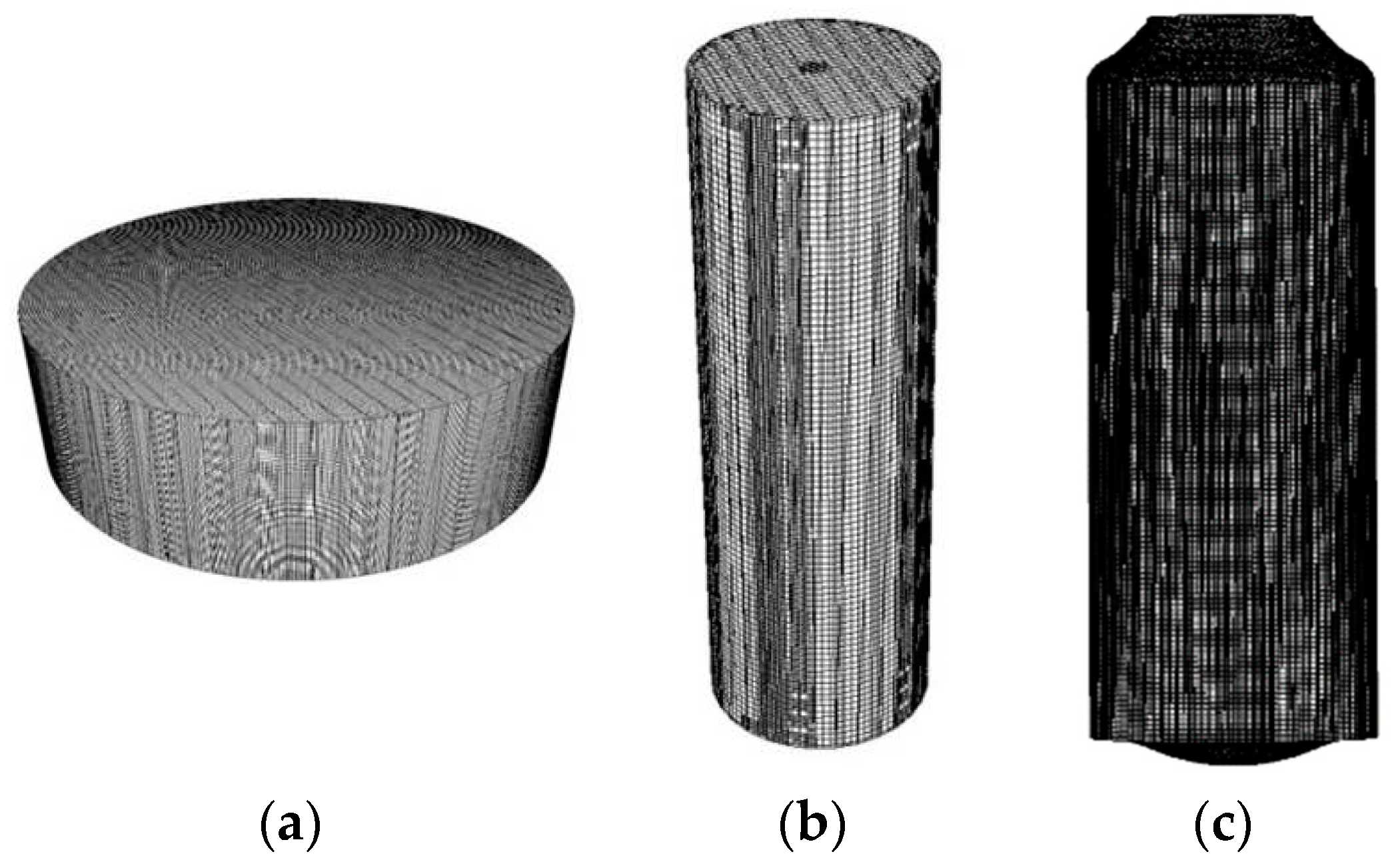
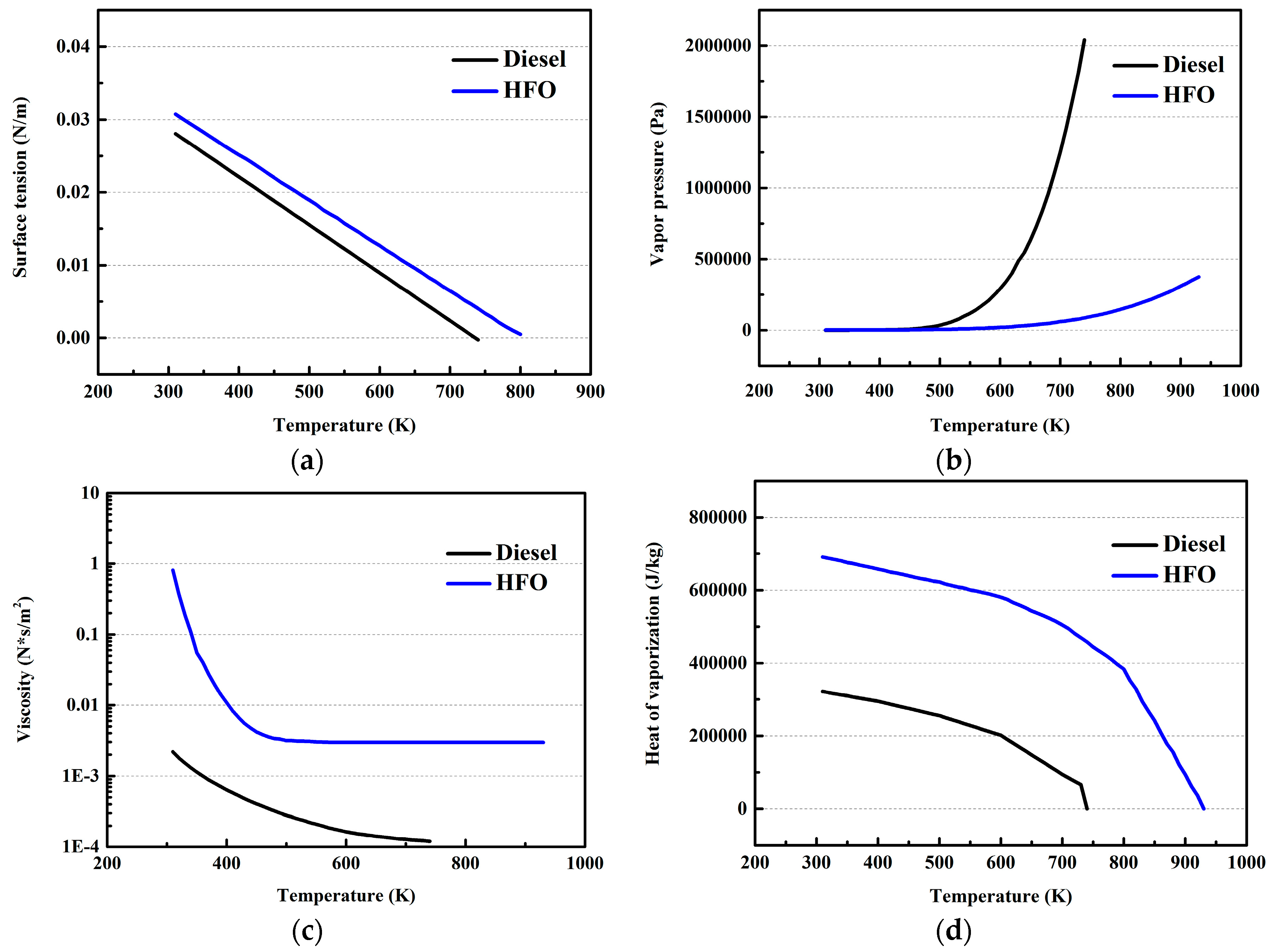
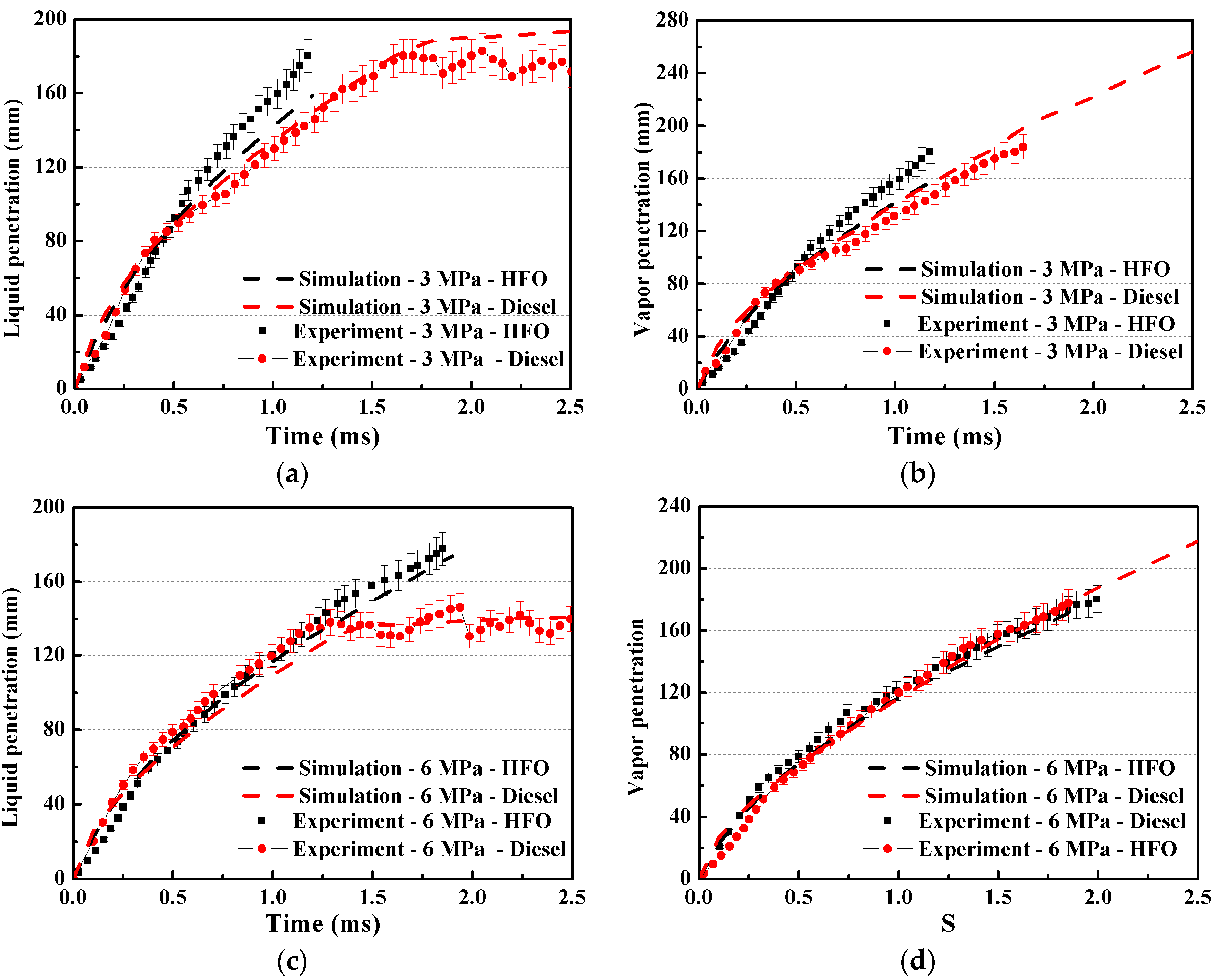
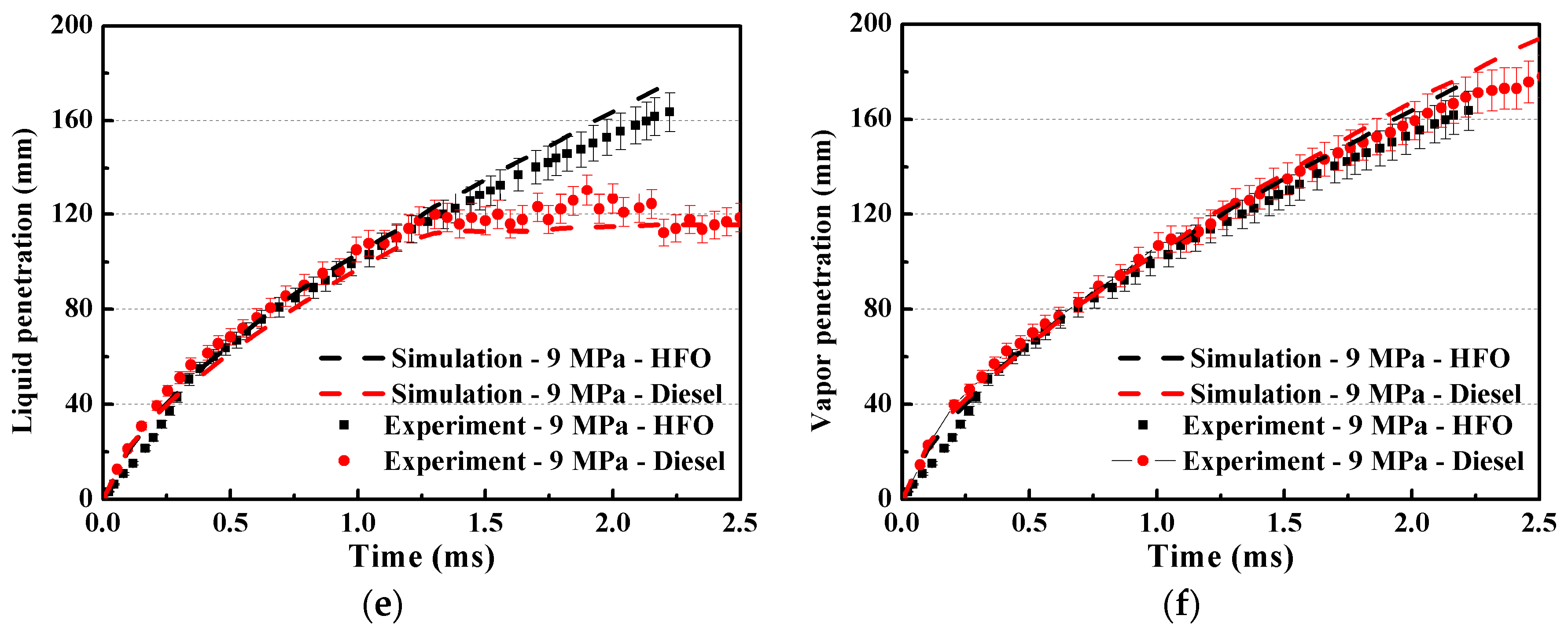
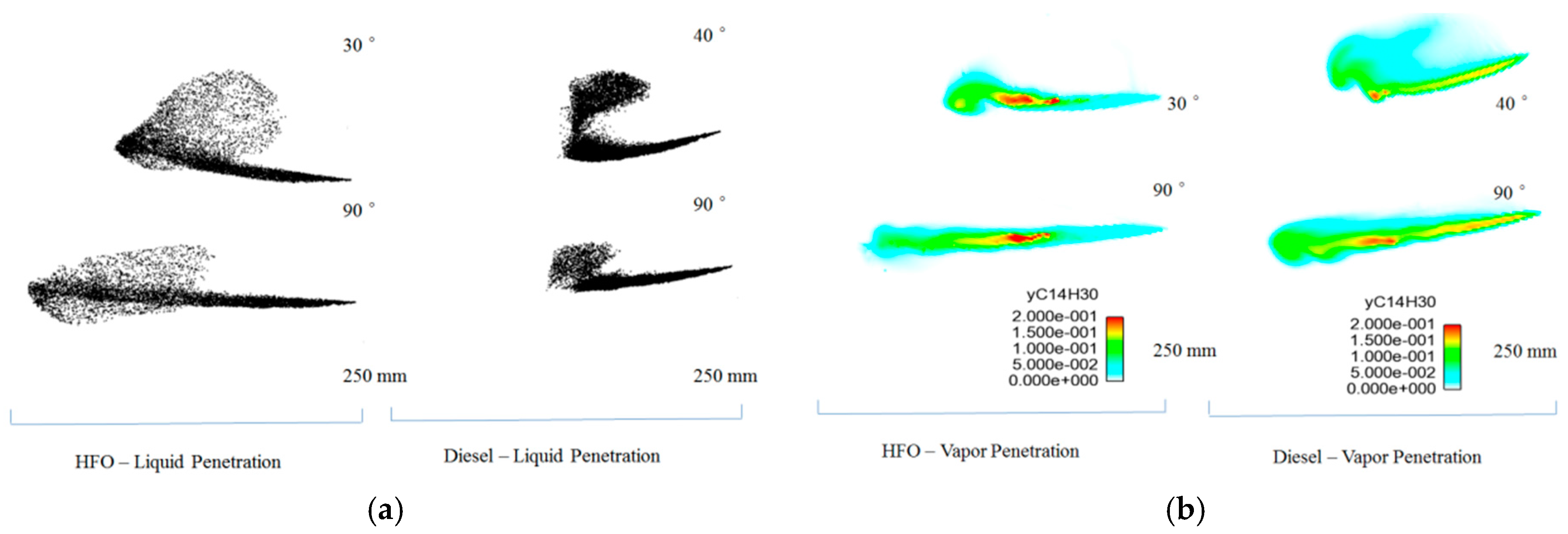
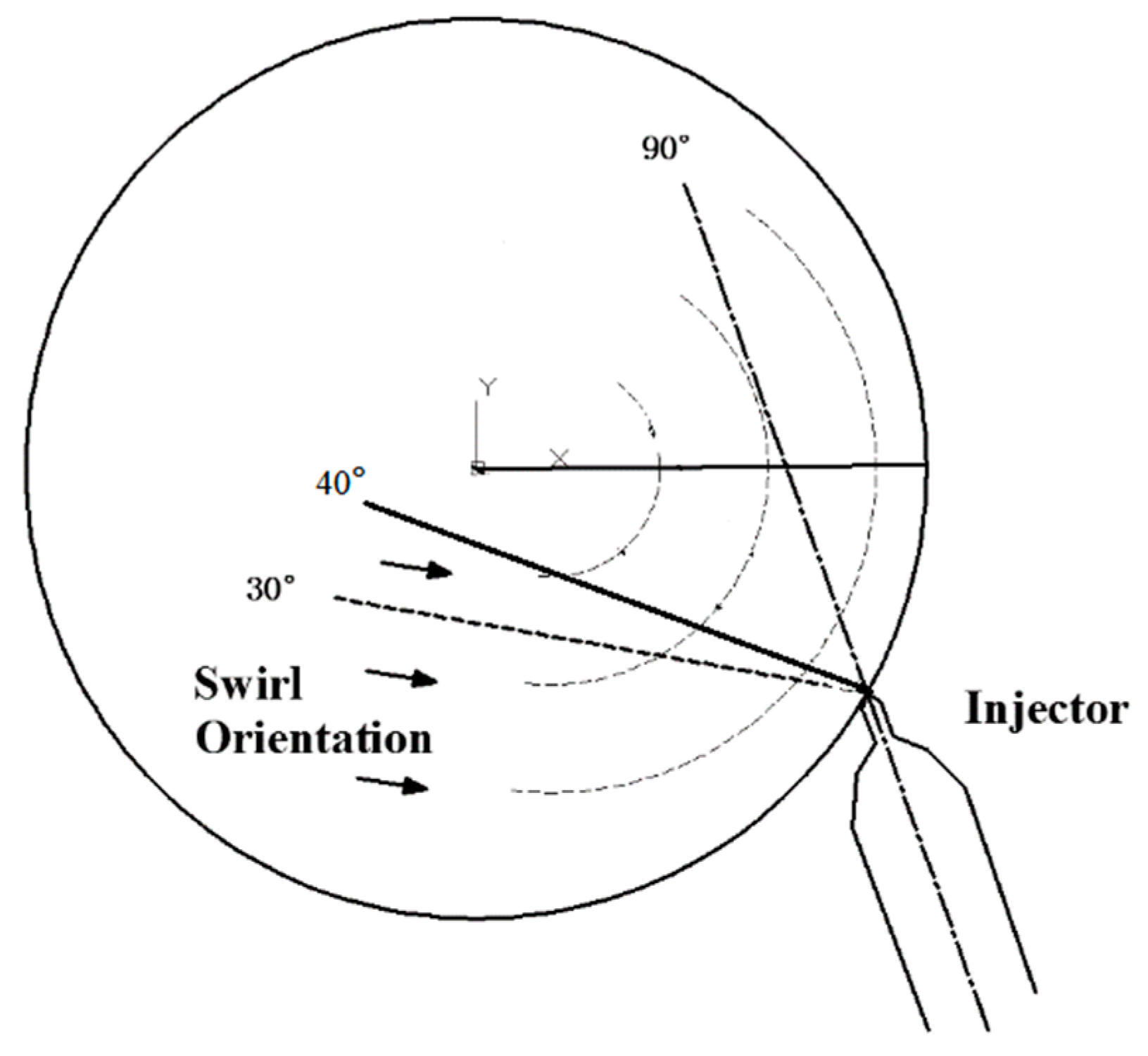
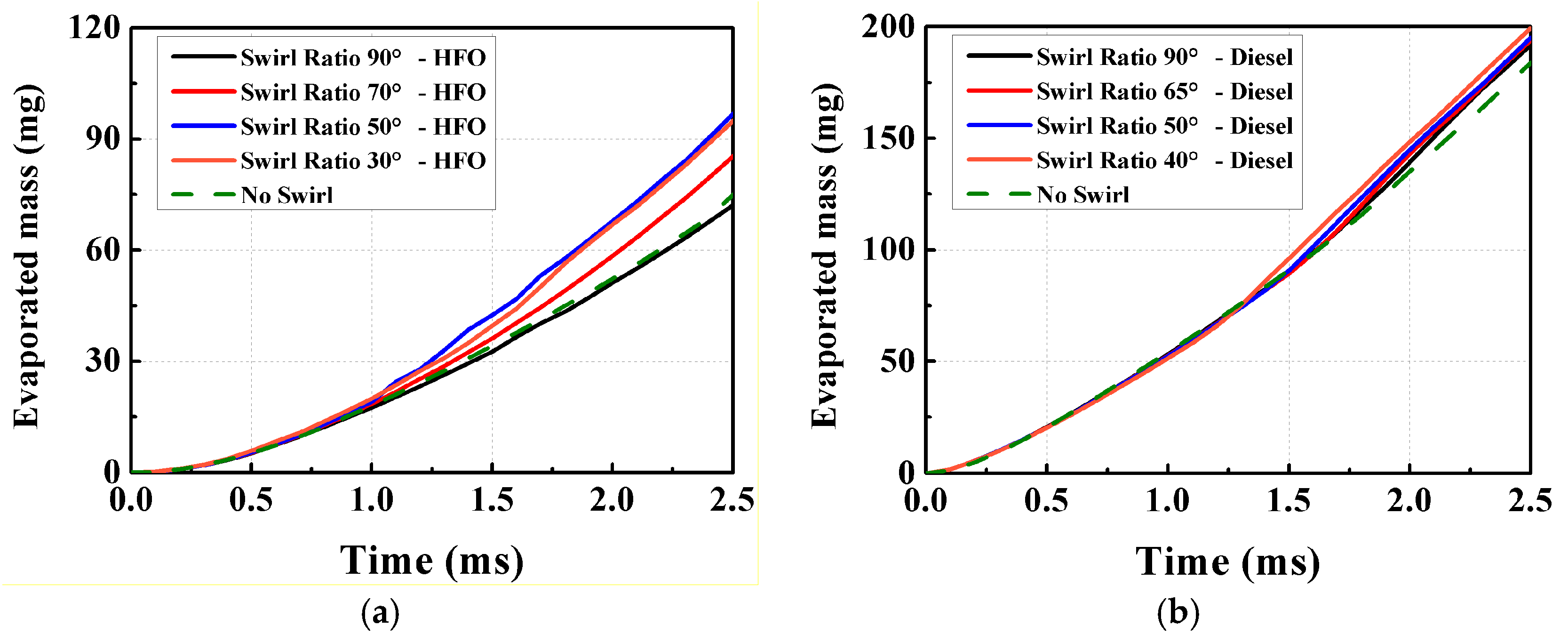
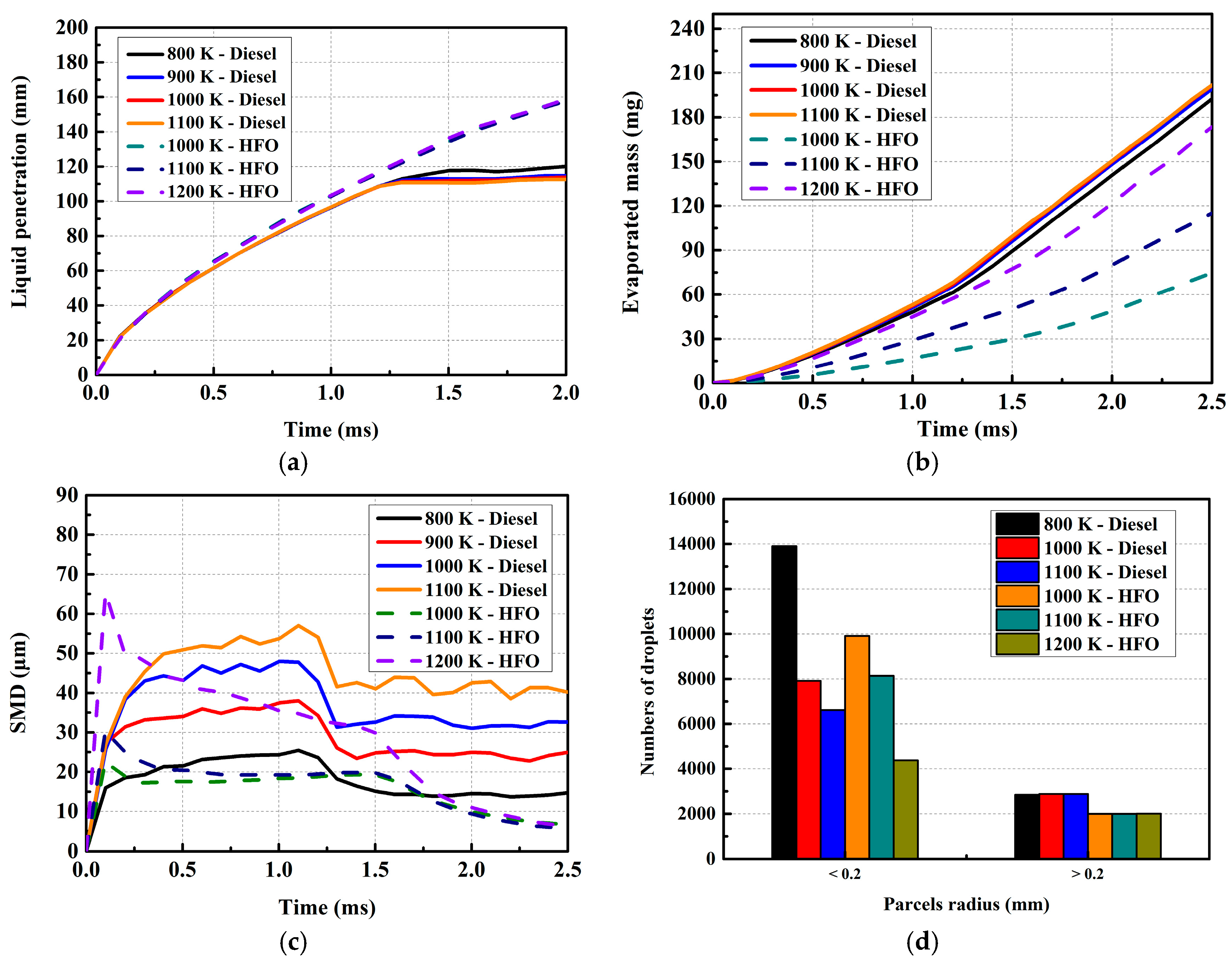
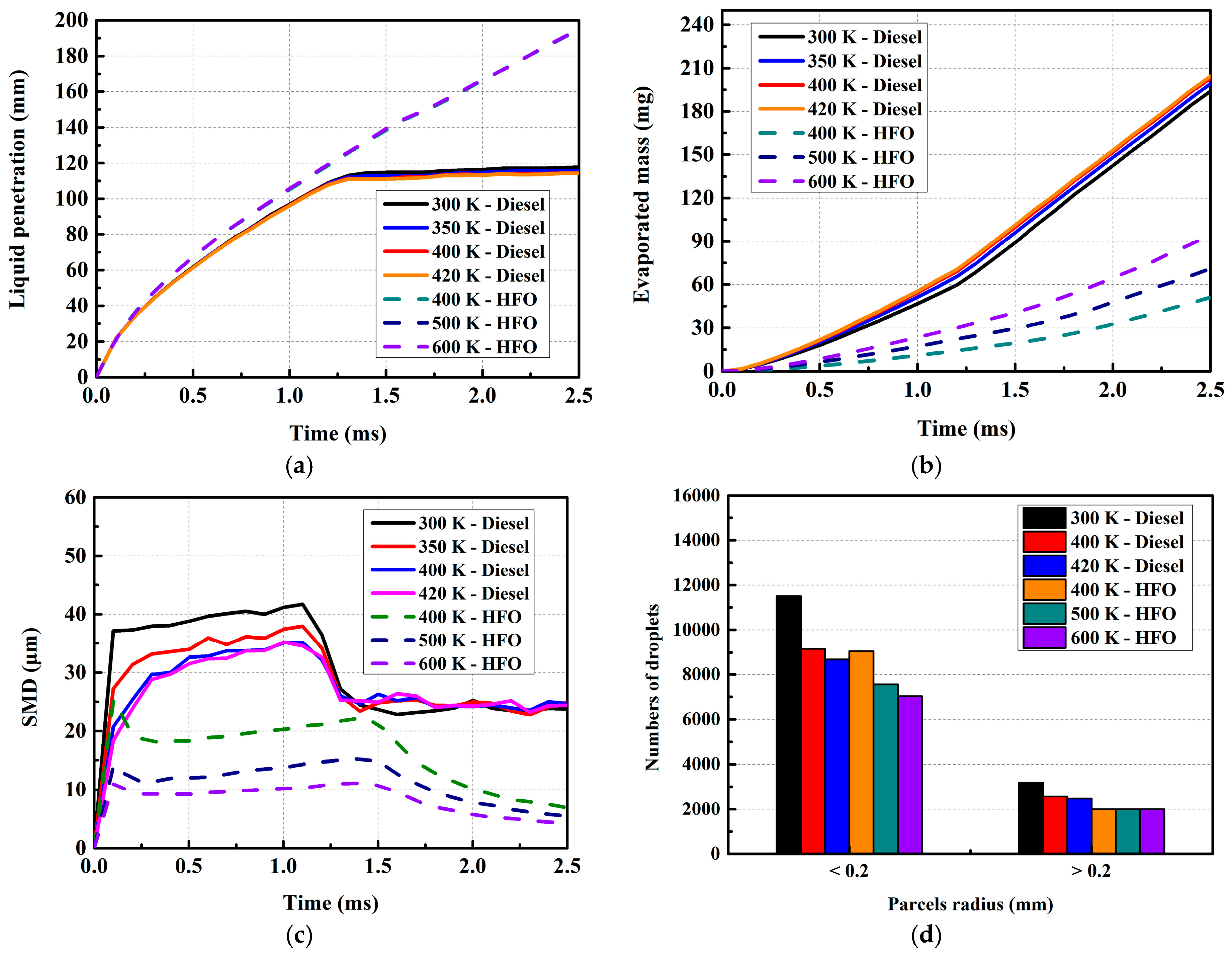
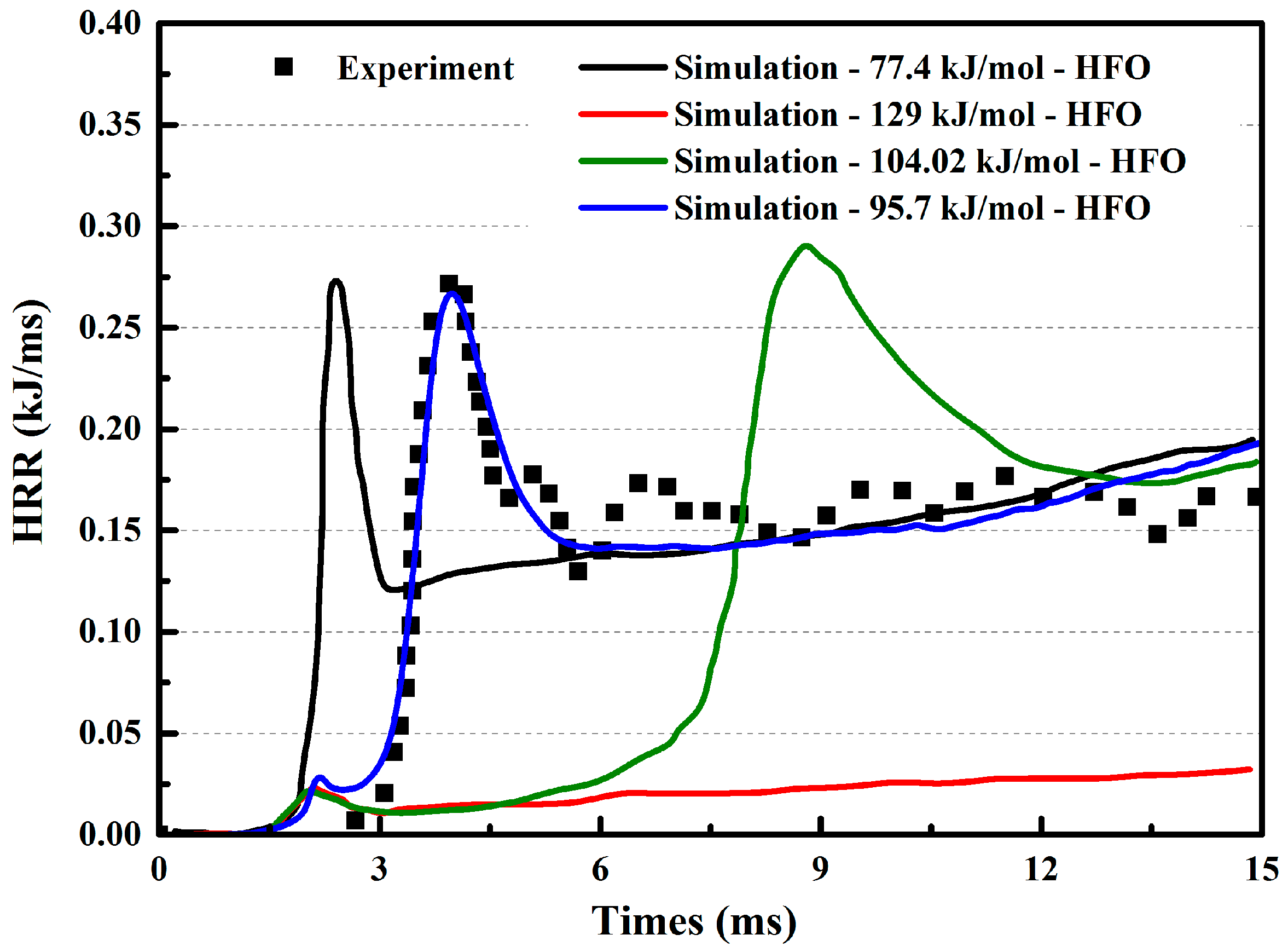
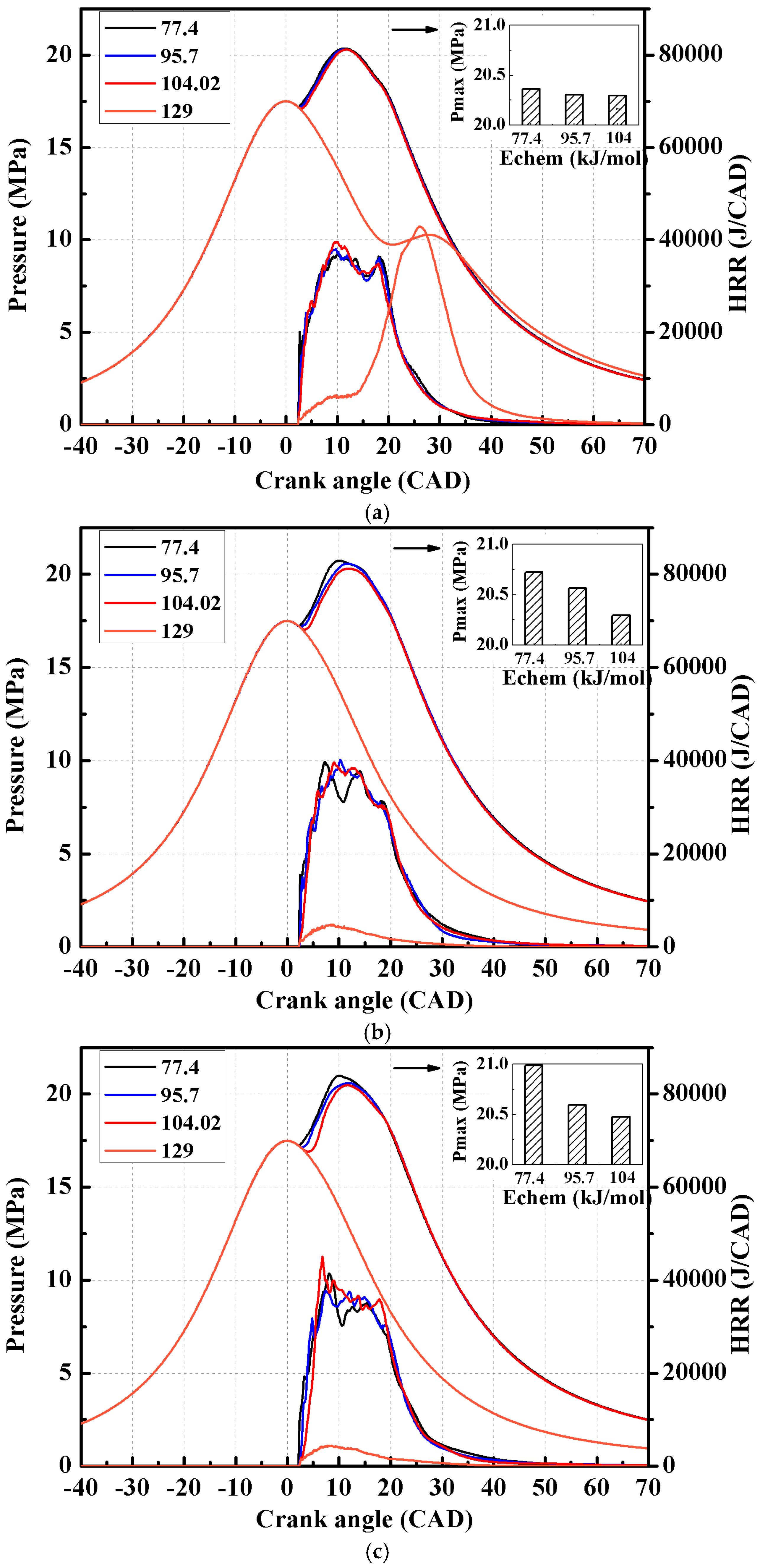
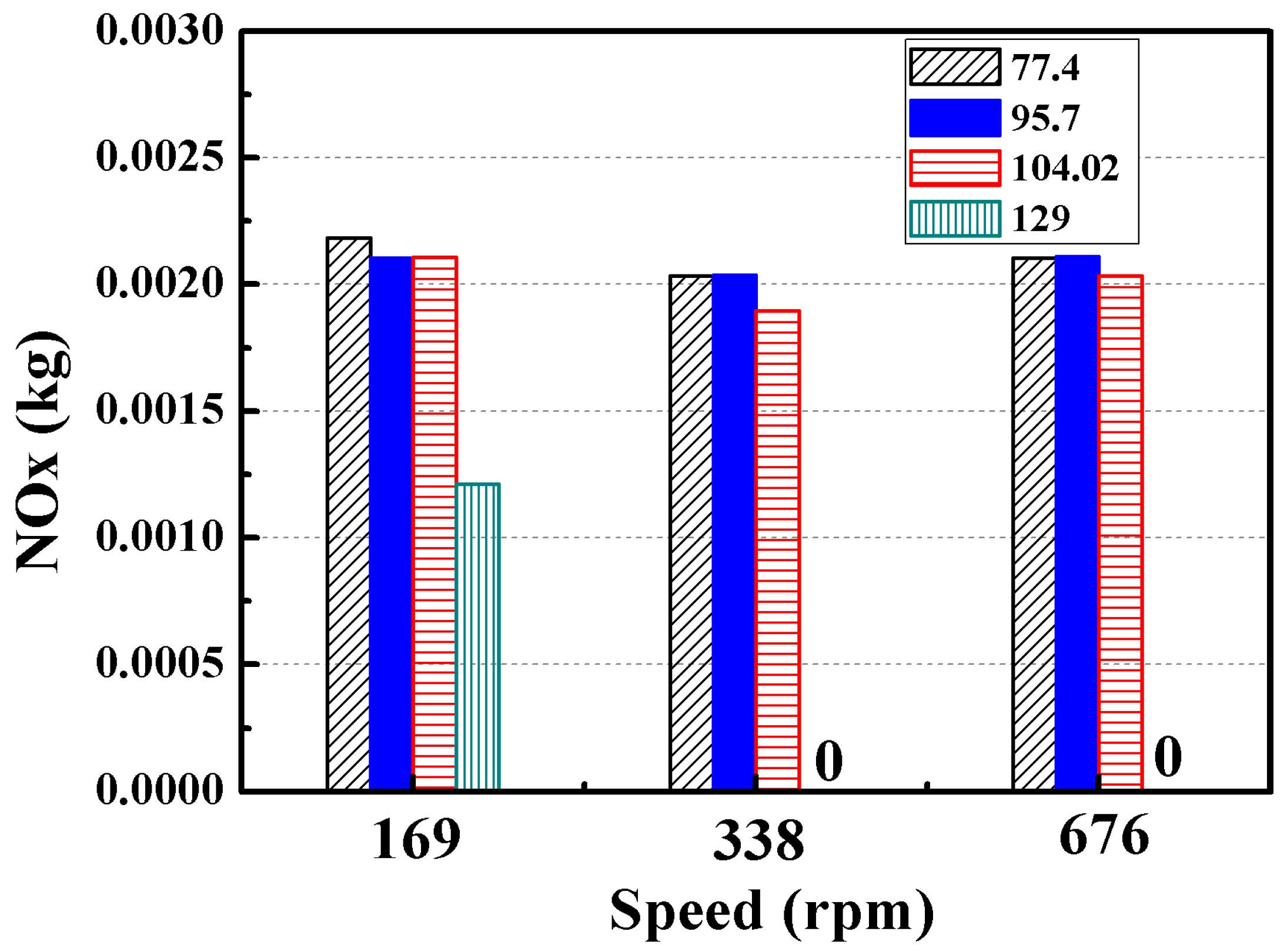
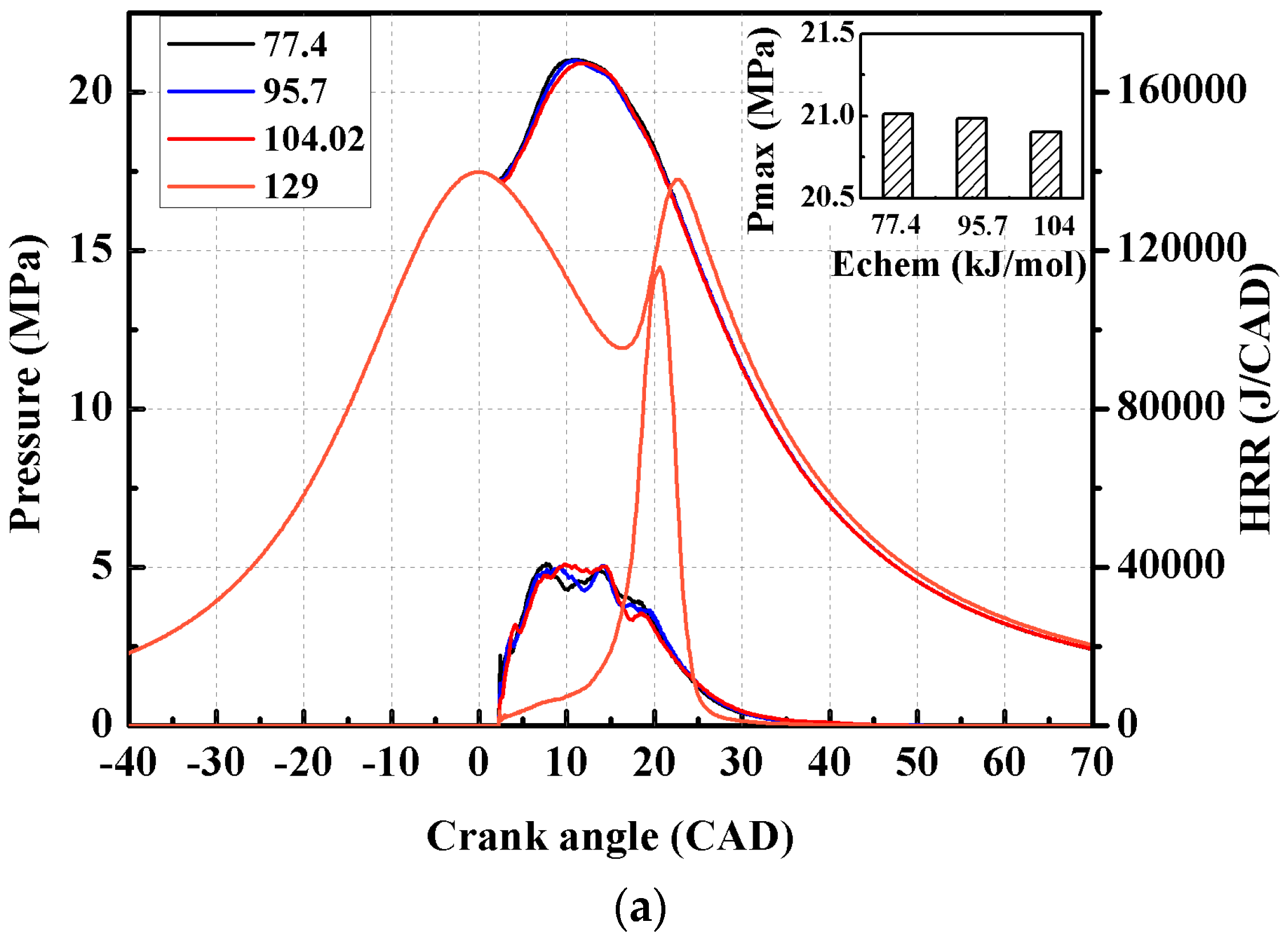
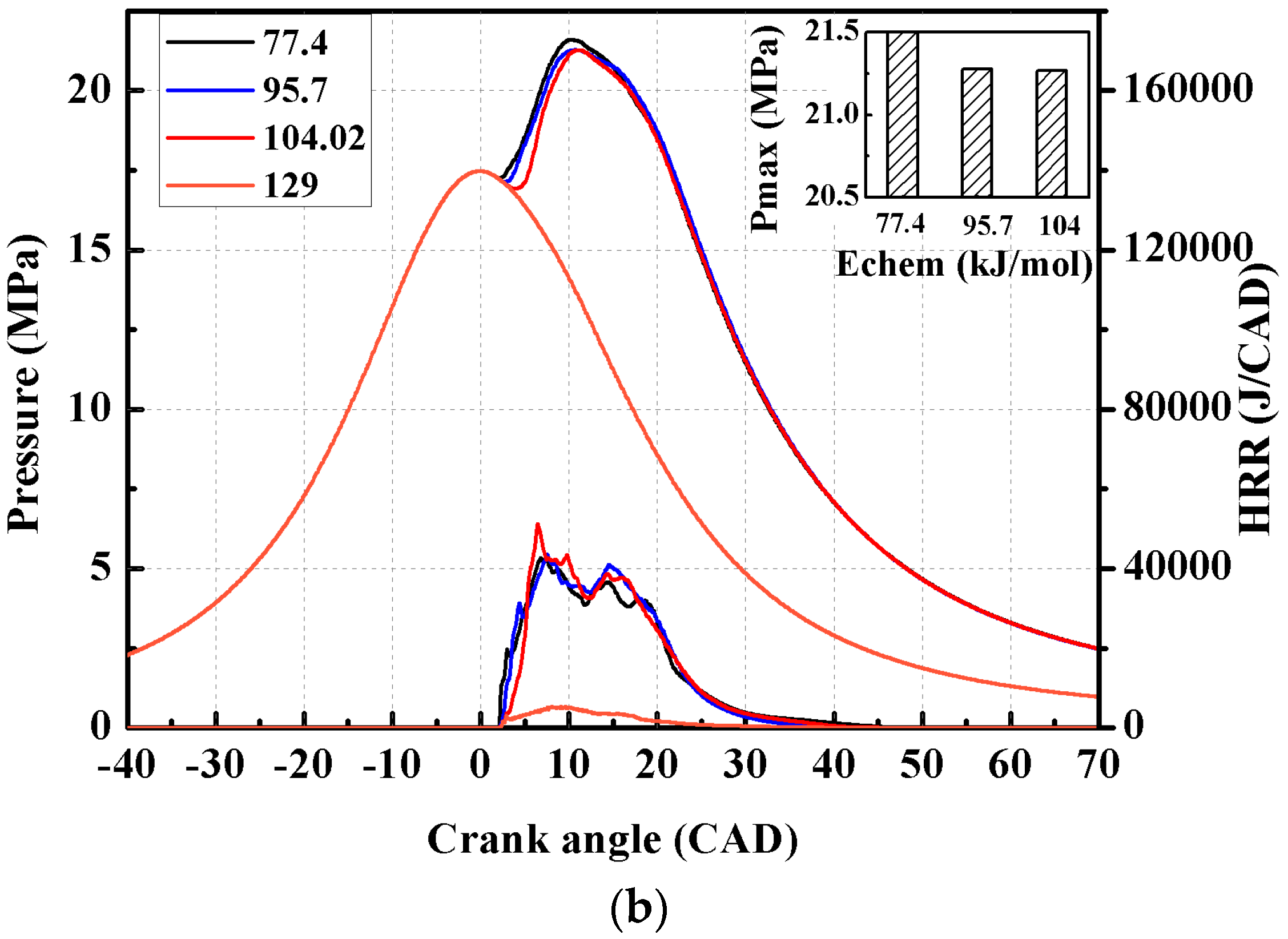
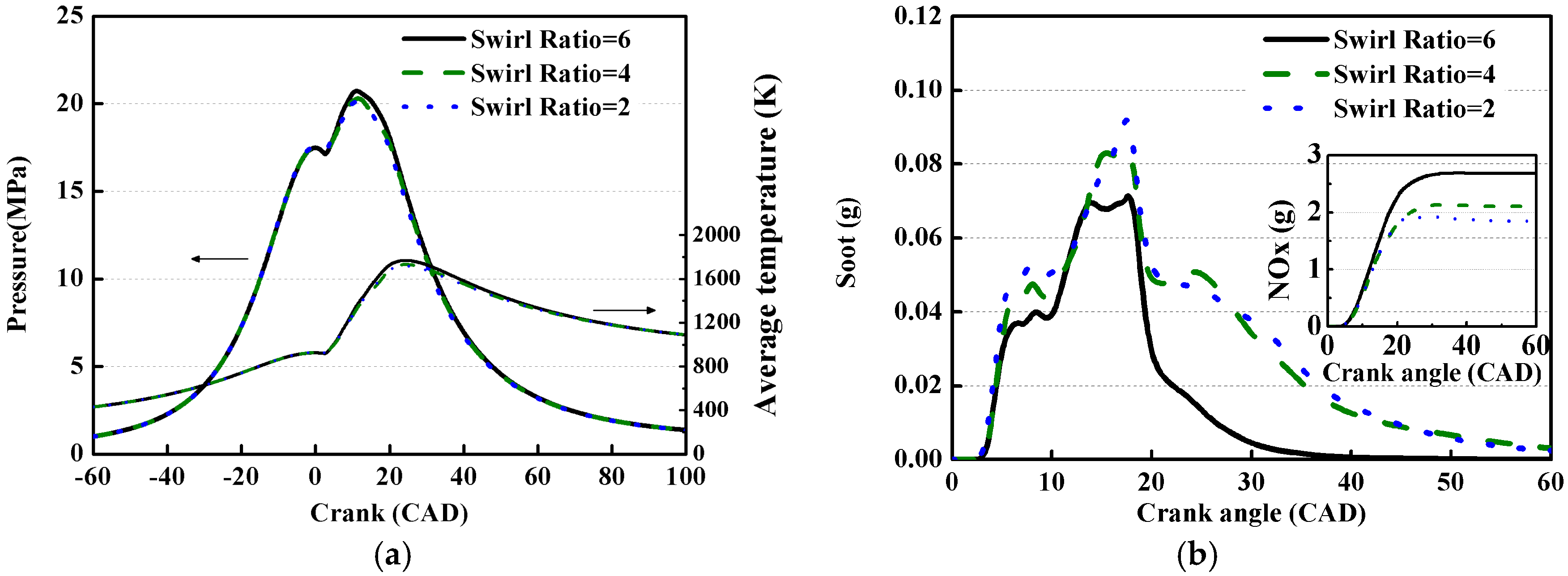
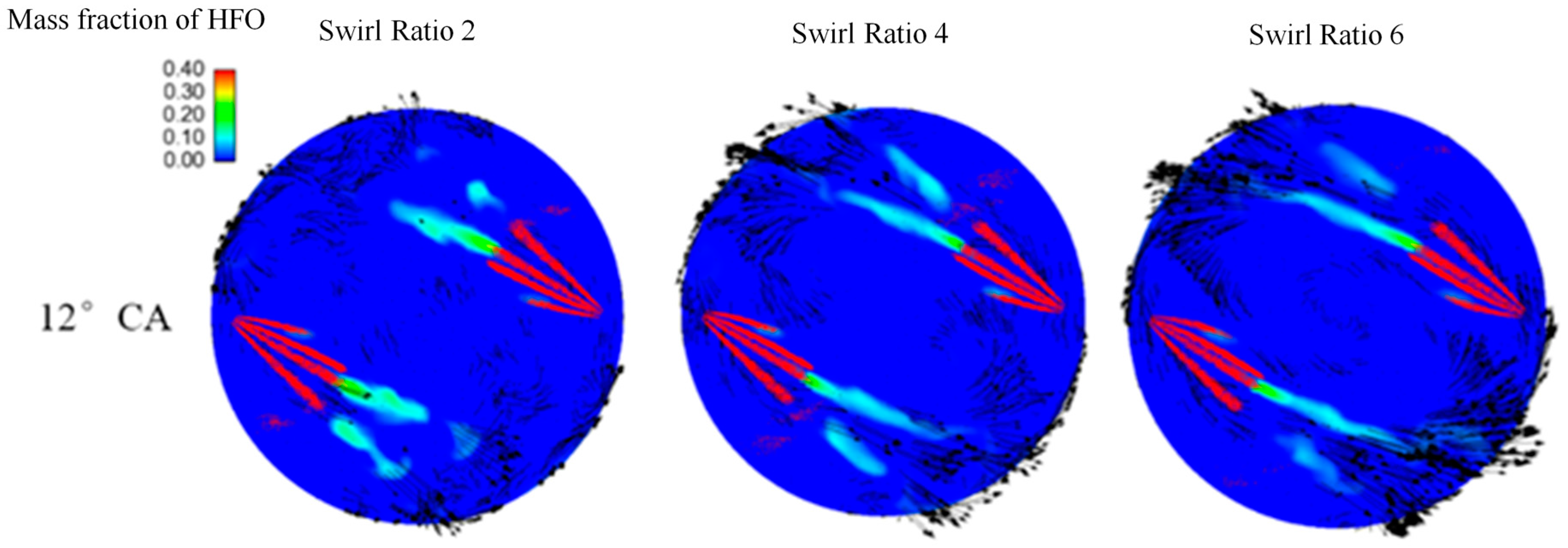
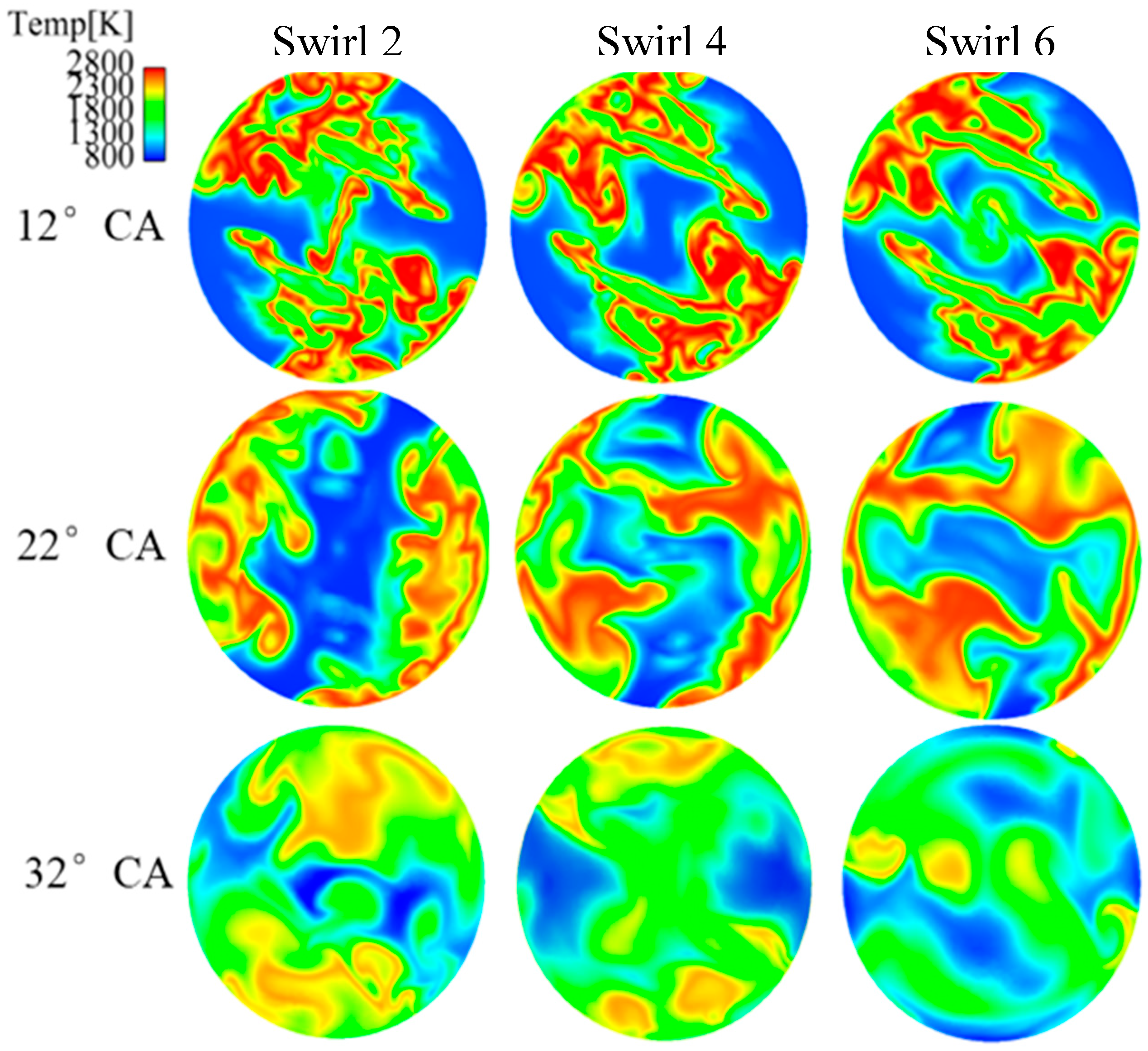

| Engine Specifications | RFCVCC | FIA |
|---|---|---|
| Diameter (mm) | 500 | 190 |
| Height (mm) | 150 | 65 |
| Ambient pressure (bar) | 90/60/30 | 45 |
| Ambient temperature (K) | 900 | 823 |
| Injection pressure (bar) | 1000 | 550 |
| Injection duration (ms) | 25 | 20 |
| Injection mass (g) | 4.4 | 0.087 |
| Nozzle diameter (mm) | 0.875 | 0.16 |
| Injection temperature (K) | 400 | 375 |
| Swirl velocity (m/s) | 15–25 | 0 |
| Gas composition | N2 (non-reacting) | N2, O2 |
| Engine Specifications | Configurations |
|---|---|
| Cylinder bore (mm) | 340 |
| Stroke (mm) | 1600 |
| Compression ratio | 20.5 |
| Speed (rpm) | 169 |
| Simulated initial time | 78° BTDC |
| Simulated end time | 108° ATDC |
| Initial swirl ratio | 4 |
| Initial cylinder temperature (K) | 372 |
| Initial cylinder pressure (bar) | 6 |
| Start of injection timing | 2° CA ATDC |
| Injection duration (CAD) | 15.36 |
© 2017 by the authors. Licensee MDPI, Basel, Switzerland. This article is an open access article distributed under the terms and conditions of the Creative Commons Attribution (CC BY) license (http://creativecommons.org/licenses/by/4.0/).
Share and Cite
Zhou, L.; Shao, A.; Wei, H.; Chen, X. Sensitivity Analysis of Heavy Fuel Oil Spray and Combustion under Low-Speed Marine Engine-Like Conditions. Energies 2017, 10, 1223. https://doi.org/10.3390/en10081223
Zhou L, Shao A, Wei H, Chen X. Sensitivity Analysis of Heavy Fuel Oil Spray and Combustion under Low-Speed Marine Engine-Like Conditions. Energies. 2017; 10(8):1223. https://doi.org/10.3390/en10081223
Chicago/Turabian StyleZhou, Lei, Aifang Shao, Haiqiao Wei, and Xi Chen. 2017. "Sensitivity Analysis of Heavy Fuel Oil Spray and Combustion under Low-Speed Marine Engine-Like Conditions" Energies 10, no. 8: 1223. https://doi.org/10.3390/en10081223
APA StyleZhou, L., Shao, A., Wei, H., & Chen, X. (2017). Sensitivity Analysis of Heavy Fuel Oil Spray and Combustion under Low-Speed Marine Engine-Like Conditions. Energies, 10(8), 1223. https://doi.org/10.3390/en10081223






